British and American rocket artillery WWII
Work on the creation of military missiles began in the UK in the late 30s. The British military leadership was focused on traditional means of hitting targets on the battlefield (barrel artillery and aviation) and did not take rockets as serious weapons.
British combat missiles were originally intended solely for firing at aerial targets, when, shortly before the outbreak of war, the need to improve British air defense was realized. The shortage of the required number of anti-aircraft guns, it was decided to compensate for simple and inexpensive missiles.
The first developed 2-inch anti-aircraft missile at launch dragged behind itself a thin steel wire, which was supposed to get entangled in the screws of enemy aircraft, causing, therefore, their fall. There was also an option with 250-gr. fragmentation charge, which had a self-liquidator tuned to 4-5 from flight - by this time the rocket had to reach an estimated height of about 1370 m. .
More promising was the 3-inch anti-aircraft missile, the warhead of which had the same mass as the anti-aircraft 94-mm projectile. The rocket was a simple tubular structure with stabilizers, the engine used a charge of smokeless powder - cordite brand SCRK, already used in the 2-inch rocket. The 25 kg rocket had a ceiling of about 6500 m.
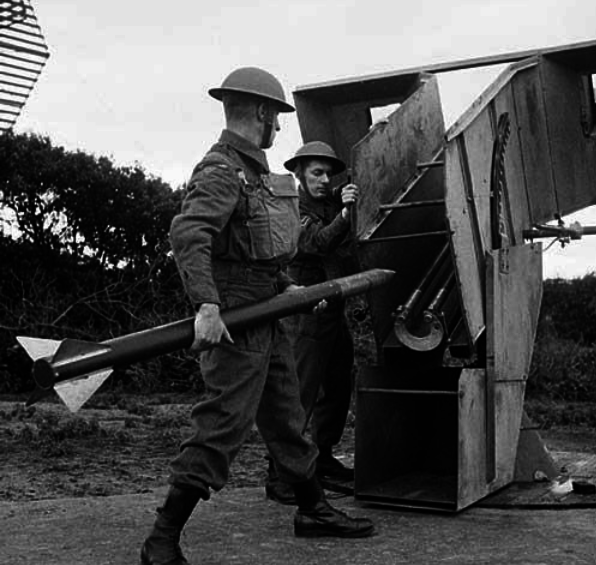
Missiles and a single shot launcher were successfully tested in the 1939 year. In the same year, the serial production of missiles and launchers was launched.
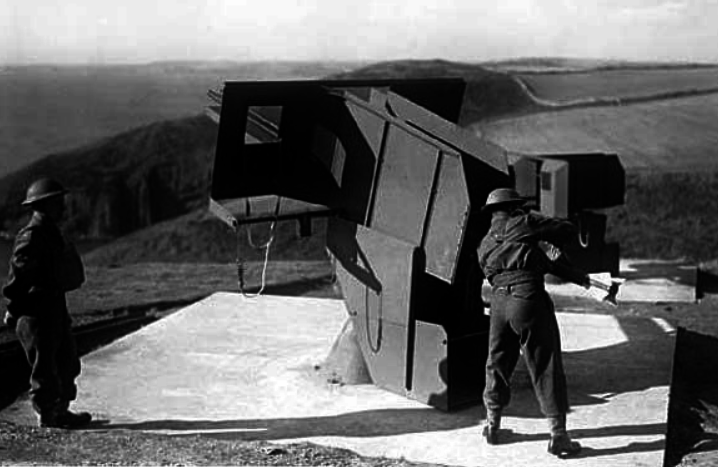
The launch of missiles from these first installations was not always reliable, and their accuracy was so low that only barrage anti-aircraft fire was possible. Soon, to increase the probability of hitting an air target, a two-track installation was adopted. In the future, increasing the efficiency of anti-aircraft rocket launchers went by increasing the number of missiles on launchers and improving proximity missile fuses.
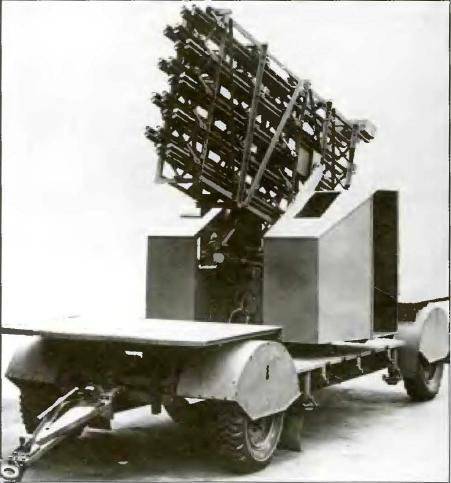
Mobile installations were made on the carriage of 3-inch anti-aircraft guns, which with 36 rail guides could launch volleys on 9 missiles.
And the most powerful was the stationary coastal defense installation, firing 4 with volleys on 20 missiles, which entered service in the 1944 year.
3-inch missiles proved much more effective as an aircraft weapon. During the war, 3-inch missiles were used from airplanes to combat armored vehicles and even to sink German submarines in surface position.
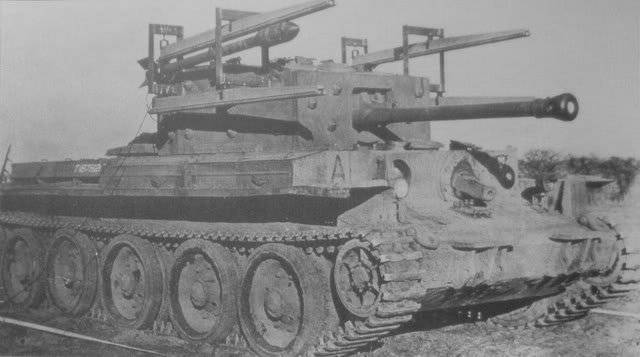
To some Tanks "Cromwell" were installed on two 3-inch anti-aircraft missiles on rails along the sides of the towers of tanks. There have also been attempts to install such launchers on armored vehicles.
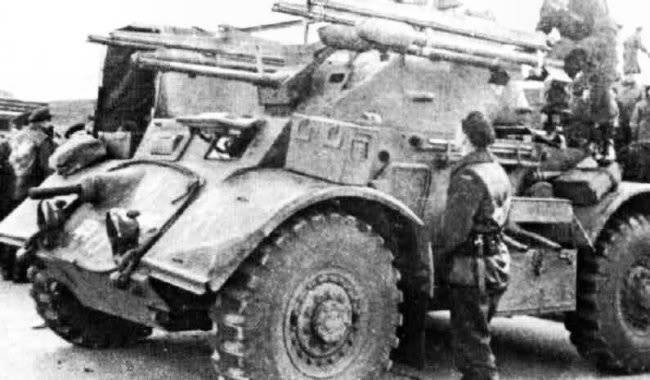
Starting in 1944, the allies began to push the Japanese into Asia. The fights in the jungle were characterized by relatively short distances of fire and often the inability to pull up artillery to destroy the Japanese pillboxes.
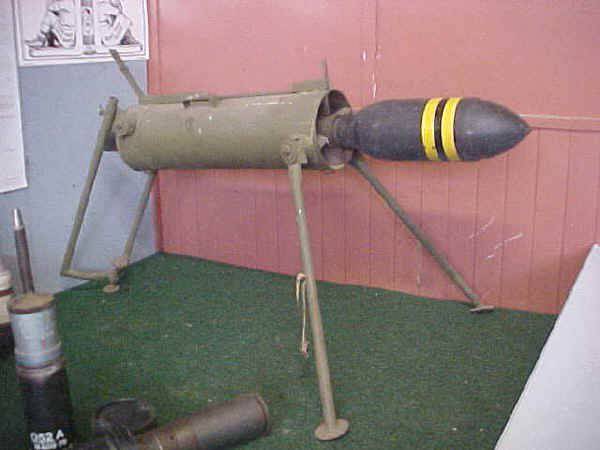
To solve this problem, a reactive system was developed, which became known under the code designation LILO.
The launcher was transferred to the firing position by one person, and the second in the backpack carried a rocket. Upon arrival at the site of the rocket was inserted into the front of the pipe, the angle of elevation was regulated by the rear support legs, and the guidance was carried out through an open sight. The launch was carried out remotely using an electric fuse from the battery voltage 3,5 B.
There were two modifications of this weapon: 83-mm - mass 17, 8 kg carried 1,8 kg of explosives, and 152-mm - mass 35 kg carried 6,24 kg of explosives.
LILO was able to enter the ground to a depth of 3 m, also punching a log flooring, which was enough to destroy any Japanese bunker.
The development of jet weapons in the UK was primarily focused on air defense, but on the eve of the inevitable landing of the Allies on the Atlantic coast, it took a light firing means, capable of giving a high density of fire in a short period of time.
Structurally, this was realized by connecting the rocket engine of the 3-inch aircraft missile with the 13-kg warhead of the 127-mm artillery projectile. To improve the accuracy of firing, the rockets twisted at the start with screw guides.
Launchers were installed on landing craft for fire suppression in the landing area. The naval system received the original name "Mattress" ("Mattress").
The land version of this installation was the “Land Mattress” (“Land Mattress”). Army towed PU had a 32 trunk and elevation angle: from 23 ° to 45 °, the maximum firing range to 7225 m.
Later, 24-x lightweight chargers were created. Fire control was carried out using remote control. On the march, the installation was towed by an ordinary army truck.
The first British “Land Mattress” was applied on Sicily in 1943 year. These installations especially distinguished themselves when crossing the Scheldt River and the Walheren storming in 1944, after which several more artillery missile batteries were created.
Installations in significant quantities arrived at the troops only at the beginning of November 1944, so they no longer had a serious influence on the course of the hostilities. Attempts to use the “Land Mattress” in Burma were not very successful, due to low mobility. It was necessary to install on a self-propelled chassis, but the developed launchers on the jeep's chassis were late for the war.
Missiles were used against ground targets naval anti-submarine bomb "Hedgehog", which was developed in the UK and installed on many British and American warships.
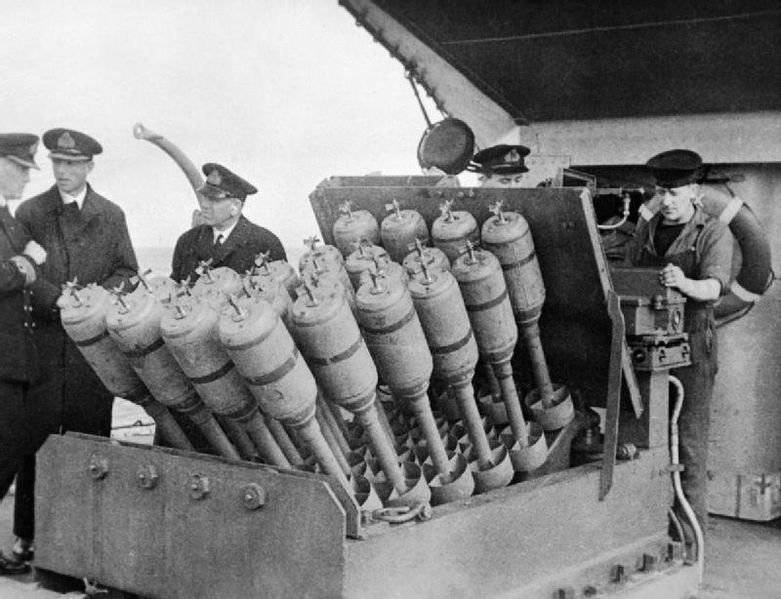
The 178-mm projectile with an increased range of fire, upgraded for firing on the coast, contained up to X-NUMX kg of Torpex, which ensured the destruction of any field reinforcement or anti-landing barricade on hit. There was also an incendiary option, which, during the explosion, covered everything within 16 radius with burning white phosphorus.
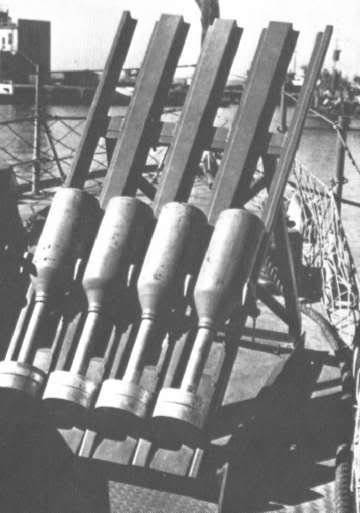
Bombers with upgraded missiles were used both from amphibious ships to “clean up” the coast, and were installed on Matilda tanks.
"Matilda" armed with anti-submarine bombers - Matilda Hedgehog, is on display in the Australian museum in Puckapunyal. At the stern of the machine is installed bombers Hedgehog.
The Americans began to develop their own missiles almost simultaneously with the British, however, the result was much better. During the war, several different types of 4,5 inch caliber missiles (114 mm) were developed and put into production. The M1943 rocket-projectile with an 8 kg mass, developed from 17,6, became the most popular for arming attack aircraft. It had a length of 911 mm and a caliber 114 mm.
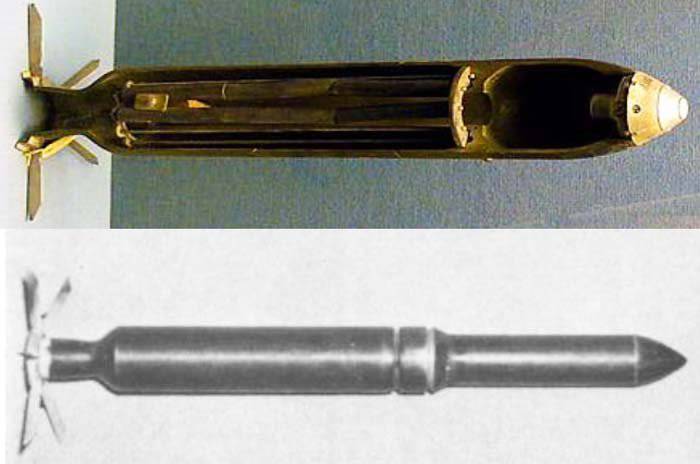
In addition to the US assault aircraft, the M8 projectiles were also actively used by ground forces, mounting multi-launch launchers on tanks, trucks, jeeps and armored personnel carriers, and in the fleet - on ships. Despite the "aviation orientation" of the M8 missiles, the ground forces and the fleet spent several times more of these missiles, using them from multi-barreled multiple rocket launchers.
In 1943, the T27 Xylophone installation is coming into service with the US Army. Installations in a single row were mounted on modified 2,5 t chassis of GMC trucks CCKW-353 6x6 or Studebaker. In terms of accuracy, firing range and volley power, they were inferior to the Soviet BM-13.
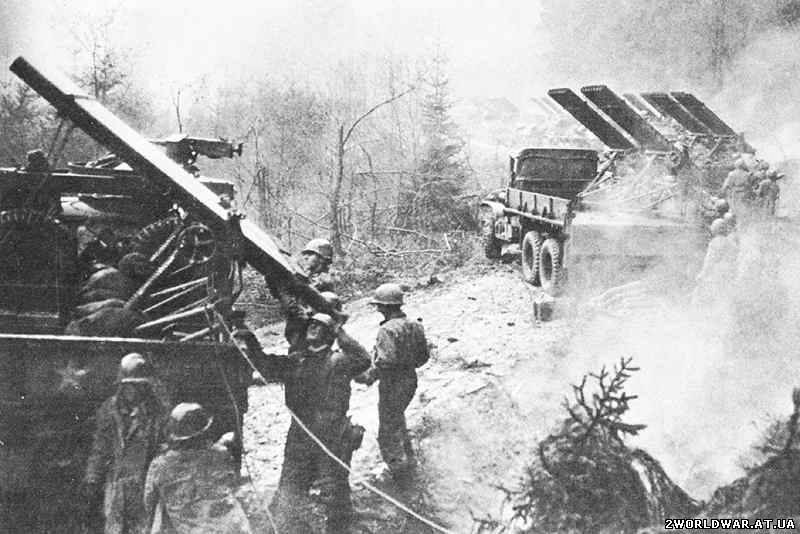
Also in the US, lighter installations have been developed. The base used modified chassis of all-terrain vehicles such as Willys or Dodge "three-quarters" of WC51.
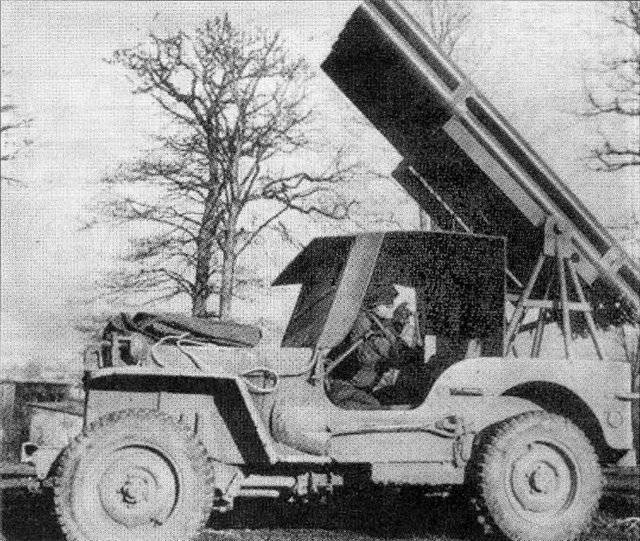
At the rear of the car were installed in two rows of pipes for 28 unguided rockets.
The most famous American MLRS has become T34 CALLIOPE.
The basis for the jet system served as a medium tank МХNUMX "Sherman". The 4 tubular guides for the M60 inch 8 caliber (4,5 mm) missile packs were mounted on its turret. The salvo weight was 114 kg, the maximum firing range was 960 m, and the salvo time was 3800-15 seconds.
The horizontal targeting of the rocket launcher to the target was carried out by the crew commander by turning the turret. Vertical targeting was made by raising or lowering the barrel of the gun, with which a package of guides was connected by means of rigid traction. The total weight of the installation was about 1 t.
Recharging the system on the battlefield was very problematic, and therefore it was simply dropped from the tank immediately after the volley. For this, only one electrical connector was disconnected and three bolts were knocked out with a sledgehammer. In the future, the installation was upgraded and it became possible to get rid of it without leaving the crew out of the tank.
The usual tactic was massive shelling of enemy positions in order to suppress anti-tank weapons from the MLRS fixed on top of the tank turret. After that, the crew quickly got rid of the launcher and went on the attack, along with the usual linear machines. Taking into account the usual "one-time" use of the launcher, later plastic and cardboard guides for missiles were adopted.
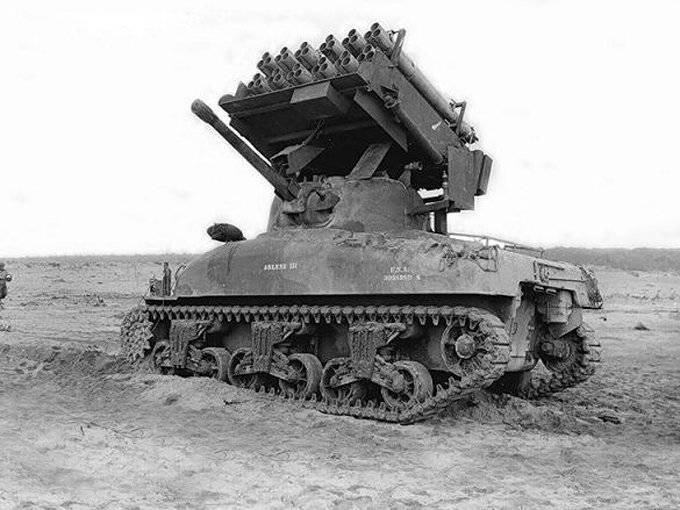
There were several versions of these installations, which enjoyed popularity among the troops and were actively used in battles.
Faced with numerous, often highly sophisticated Japanese fortifications and firing points during the battles for the atolls, the Americans quickly created and adopted a single-shot M12 launcher for the 114-mm missiles M8, like the British LILO. Used as plastic, disposable launchers, and reusable magnesium alloy. However, the weight of the warhead of the 114-mm M8 projectile did not exceed 2 kg, and the effectiveness of the installation on protected targets was often not sufficient.
The most “multi-barreled” were the T44 PU with the 120 “pipes”, on the cargo area of the DUKW amphibious truck or the LVT amphibious vehicle and the Scorpion PU with the 144 trunks, based on the DUKW amphibious.
The US Navy and Marines actively used 114-mm projectiles such as 4,5 "BBR - (BBR - Beach Barrage Rocket - a rocket to destroy coastal facilities).

The 4,5 "BBR missile had a caliber of 114,3 mm, its length was 760 mm, weight - 13 kg. Powder-propellant charge with a weight of 6,5 kg provided the maximum speed of the projectile 233 m / s, the firing range was about 1 km. The combat part contained 2,9 kg trinitrotoluola. in its action the projectile was comparable to the 105-mm howitzer high-explosive fragmentation projectile.
4,5 "BBR shipboard launchers were packs of cellular guides mounted on the deck of assault landing ships at an angle 45 ° to the horizon. Each of these ships could launch several hundred missiles in a matter of seconds, ensuring the defeat of fortifications and enemy manpower On the coast. In 1942, shipboard launchers were used during the landing of Allied forces in Casablanca, and from 1943, they were widely used in landing operations on Pacific ovah.
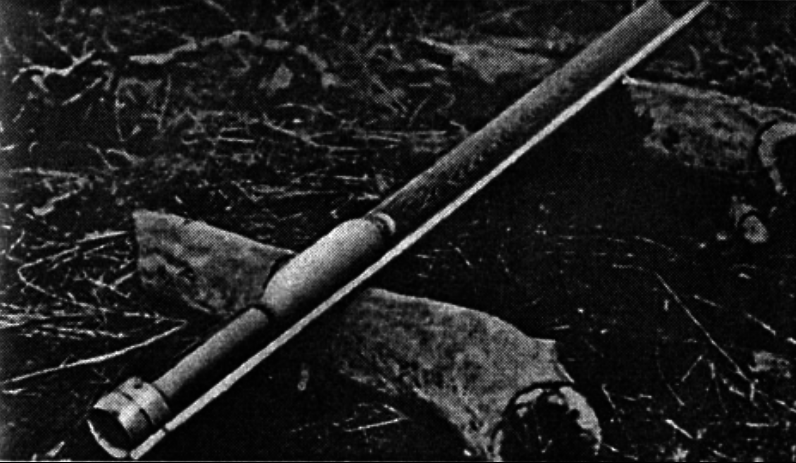
The first land launchers for launching 4,5 "BBR projectiles" were improvised wooden grooves, which the United States Marines used to conduct a disturbing fire at the positions of the Japanese.
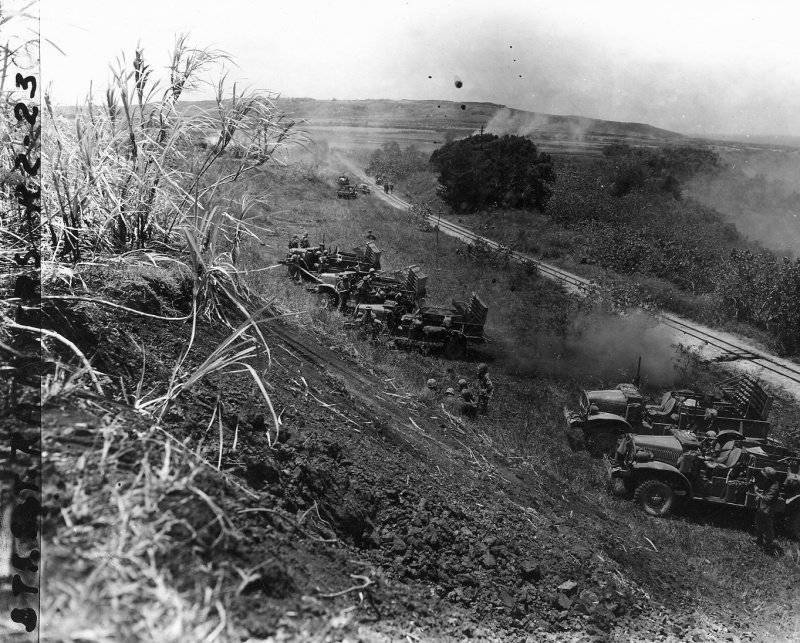
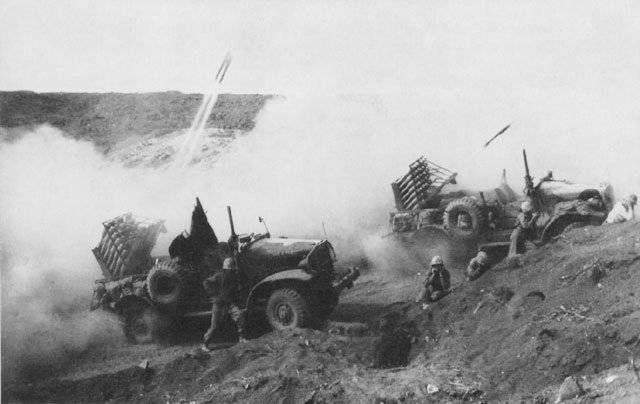
Also, the simplest launchers were mounted on light all-terrain vehicles, aiming at the target was carried out by means of the corresponding rotation of the car. Fire control was carried out using the remote control.
Absolutely all the 4,5 "BBR missile launchers had a large dispersion when fired and could only be used to attack areas. However, there was no shortage of ammunition for seafarers and marines: during the war years in the United States more than 1 600 000 4,5 rocket shells were produced "BBR.
Despite the fairly widespread use, the available jet ammunition did not satisfy the American military in the accuracy and power of action at the target. In this regard, the Americans moved to the principle of stabilizing the rotation of the missiles.
The 4,5 inch M16 rocket had a length of 787 mm and a mass of 19,3 kg, including 2,16 kg of rocket fuel and 2,36 kg of high-explosive explosive. Its initial speed was 253 m / s, the maximum range of 4805 m. Its stabilization in flight by rotation around the longitudinal axis is provided by a turbine screwed in the bottom of the powder engine, having 8 gas nozzles inclined to the axis of the projectile. The M16 missiles were no longer in service with American aircraft, being purely ground-based for multiple launch rocket systems.
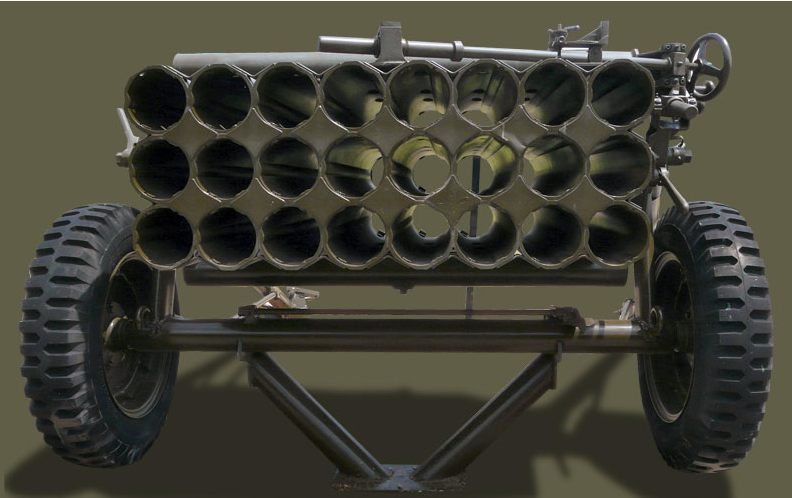
Especially for this missile was developed towed T66 launcher. It consists of 24 aluminum tubular rails, combined in a package, mounted on a two-wheeled carriage with sliding beds.
The vertical plane provides guidance in the range of angles from 0 ° to + 45 °, in the horizontal - within 20 °. Loading launcher was made with the muzzle. Weight launcher without shells - 556 kg. This allowed the use of for transport all-terrain vehicles such as "Willis". Shooting from the installation was carried out using the remote control.
Dispersion of shells was relatively small. For complete equipment installation T66 missiles took about 90 seconds.
The T66 launcher on the totality of characteristics was the most advanced US MLRS used in the Second World War, but it was used only in the final stages of hostilities, and in very small quantities.
In 1943, 182-mm (7,2 inches) unguided missile Ml7, intended primarily for the destruction of long-term defenses, was put into service in the United States. The length of the Ml7 projectile was 880 mm, the total weight - 27,5 kg. During the engine's operation, the projectile accelerated to the speed of 210 m / s, the firing range was approximately 3,2 km.
There was also an improved version of this projectile - M25. He had the head of a different design, the length of the projectile was increased to 1250 mm, the weight was 26 kg. Compared to 114-mm rocket projectiles, the new projectiles had a shorter range and a more powerful high-explosive fragmentation warhead.
The T40 launcher for twenty MNNXX missiles was also mounted on the Sherman, by analogy with the T17 CALLIOPE MLRS.
The installation consisted of 20 honeycomb guides. The rail package itself had armor protection, and in its front part the protection was made in the form of armor flaps that flip up and down.
The T40 launchers were first used in 1944 during the landing of Anglo-American troops in Normandy, and they were used in battles in Northern Italy.
In evaluating the Anglo-American MLRS, it is worth noting that, unlike the USSR and Germany, they were never considered in the armies of the allies as an important means of fire destruction of the enemy. This can be explained by the overwhelming superiority over the German forces in the classical means: barreled artillery and aircraft.
In terms of their combat characteristics, American, and especially British, rocket projectiles were significantly inferior to those used by Soviet and German gunners. This was reflected in the tactics of their use: the British and American MLRSs rarely fired at the enemy’s rear, usually limited to providing direct fire support to their advancing units.
PS The review was compiled at the personal request of Vladimir Glazunov, a resident of the Crimea, an officer of the Russian Ministry of Emergency Situations, known on “VO” under the nickname badger1974.
Based on:
http://world-of-kwg.livejournal.com/220800.html
http://www.designation-systems.net/dusrm/
http://epizodsspace.no-ip.org/bibl/shunkov/rak-oruj/02.html
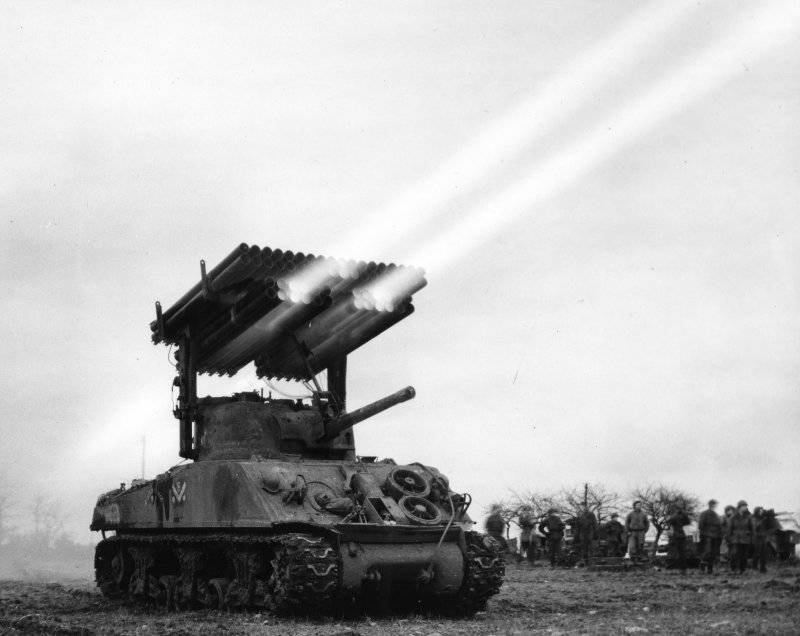
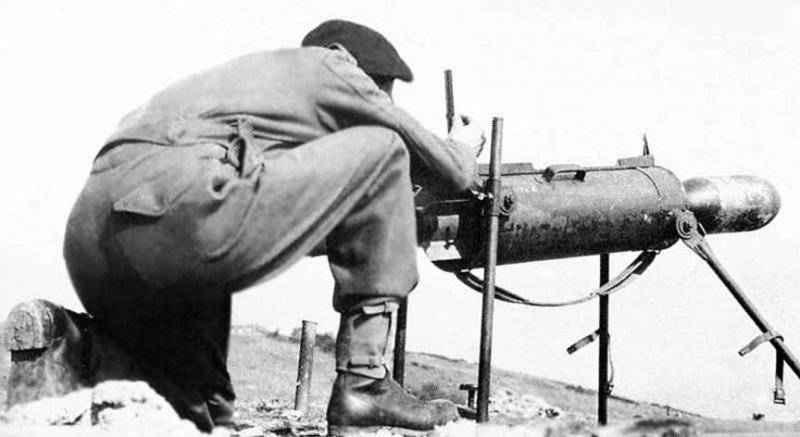
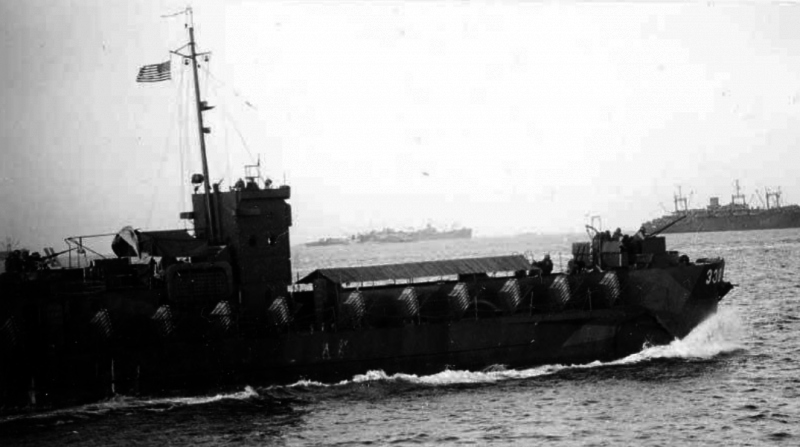
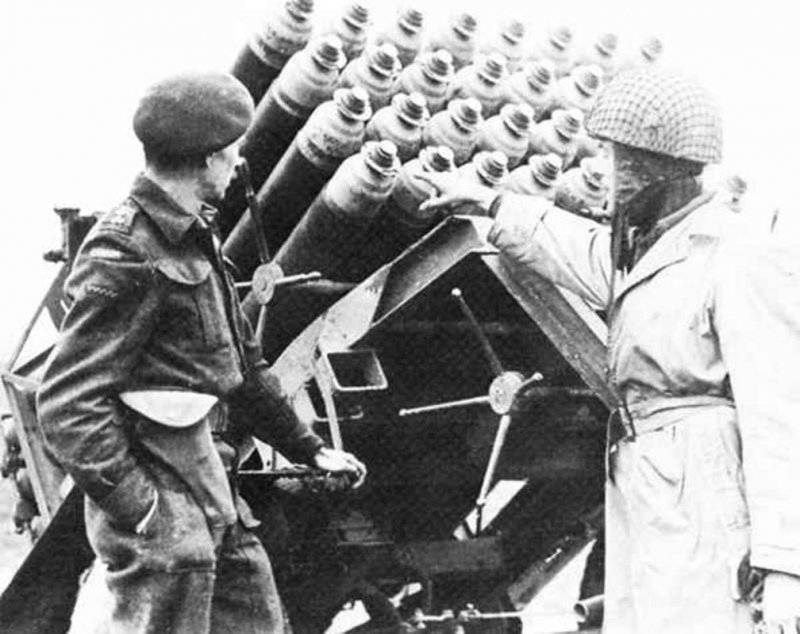
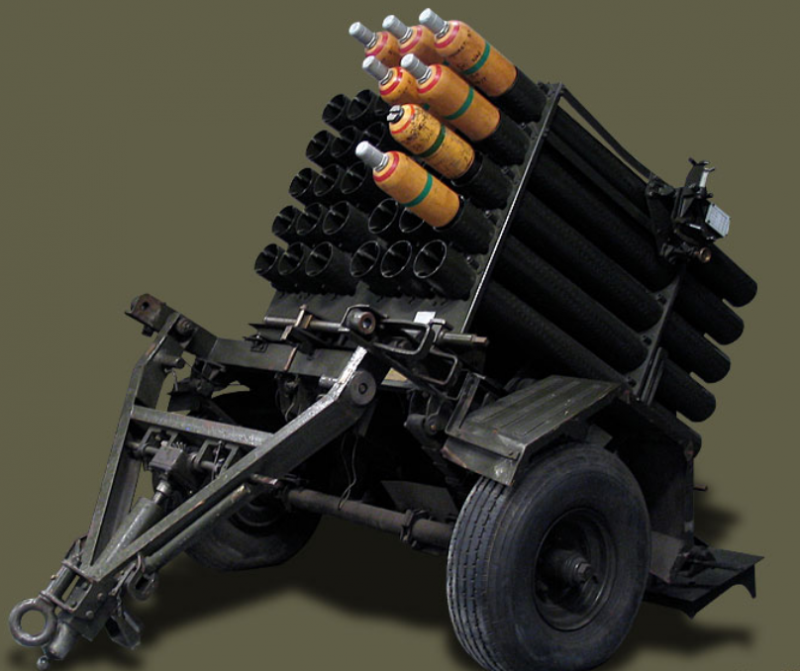
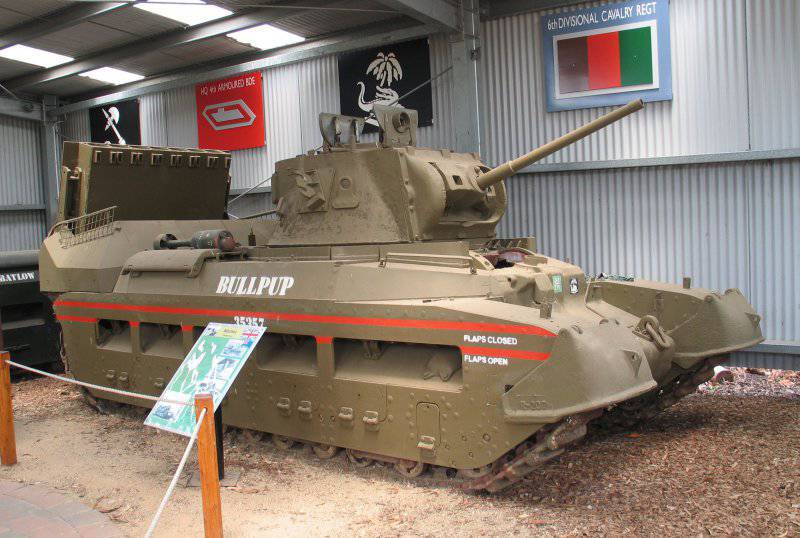
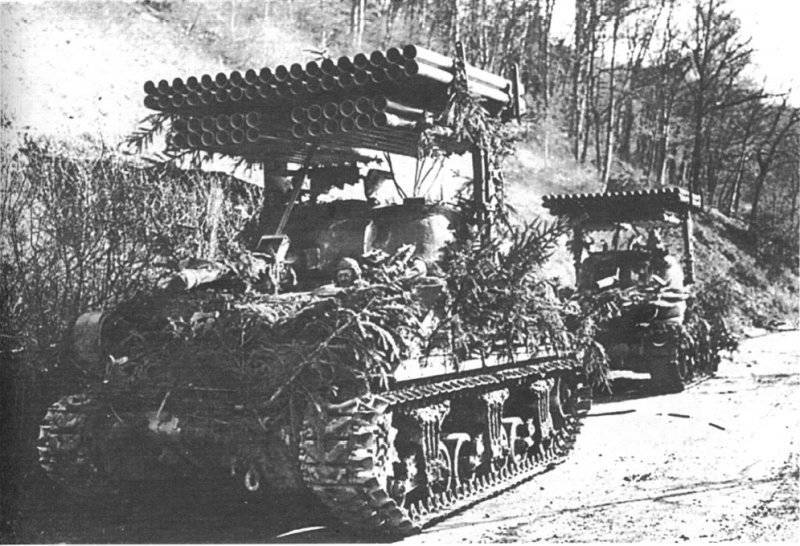
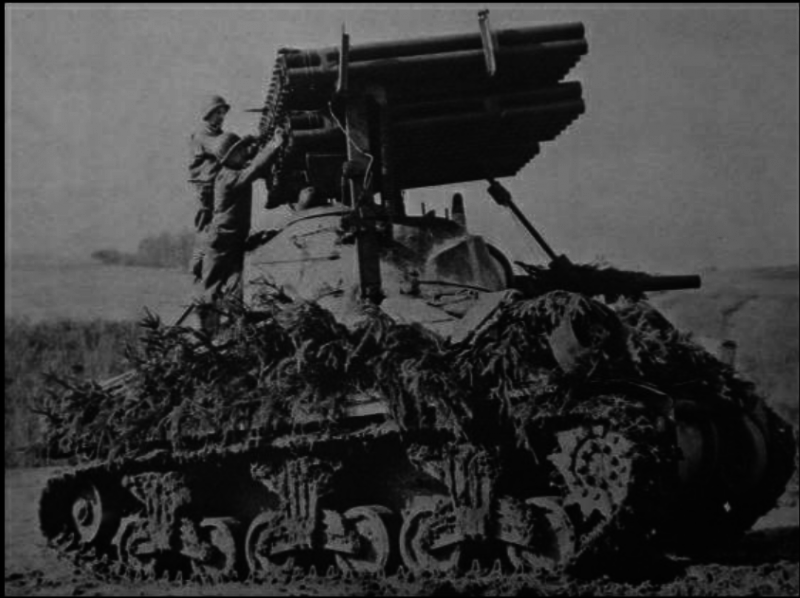
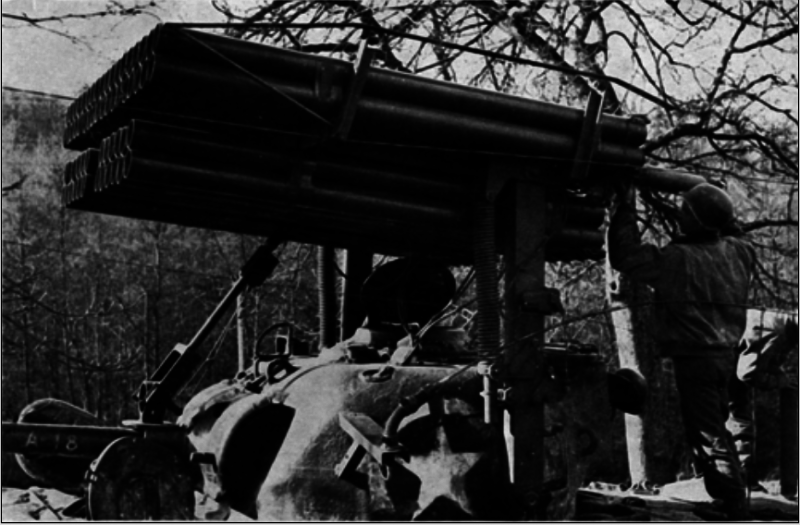
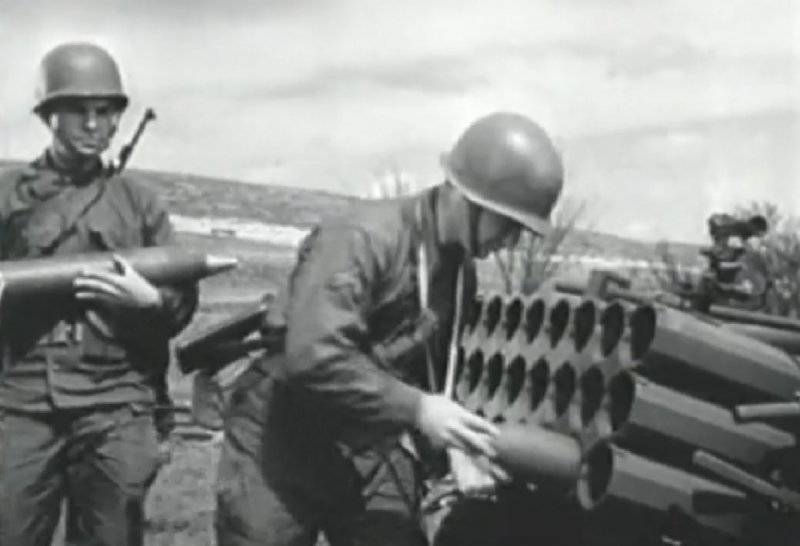
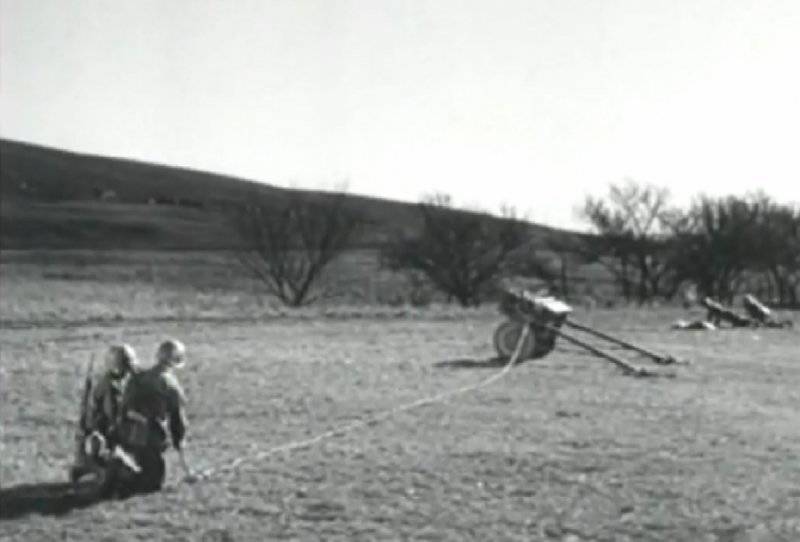
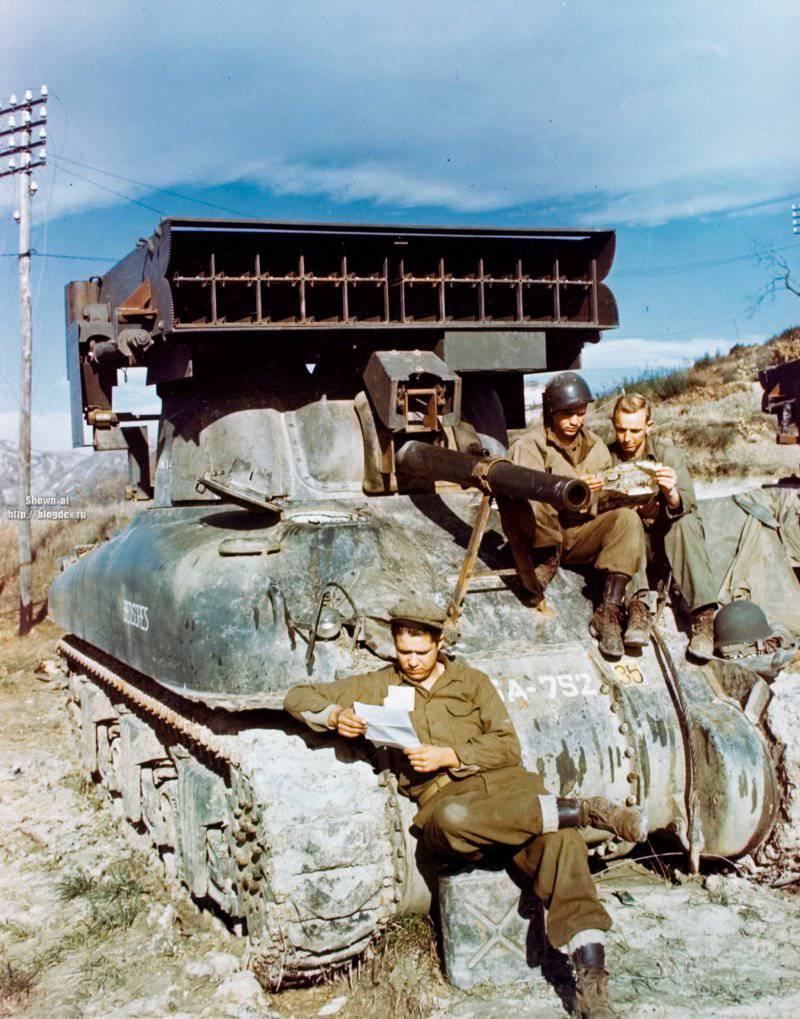
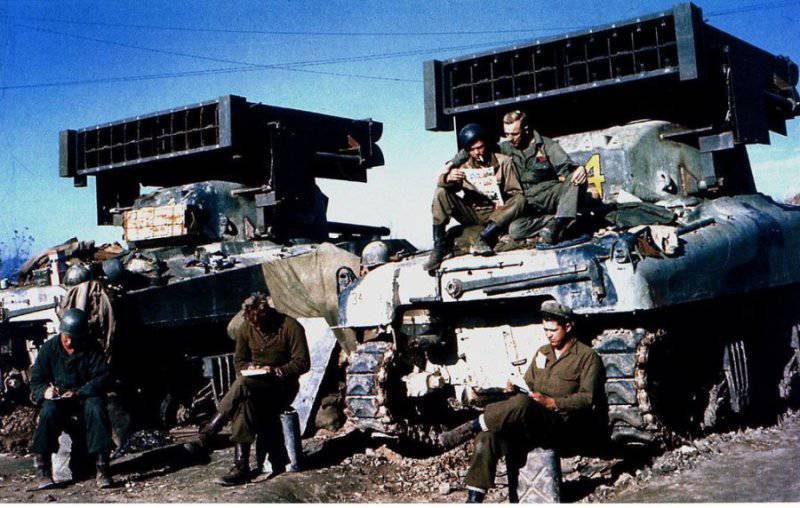
Information